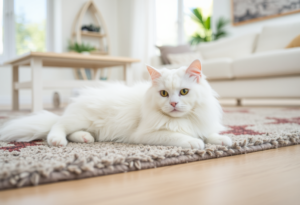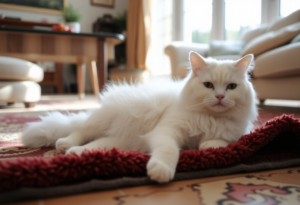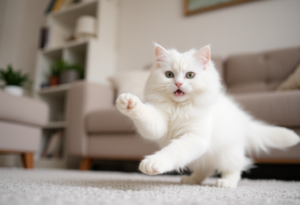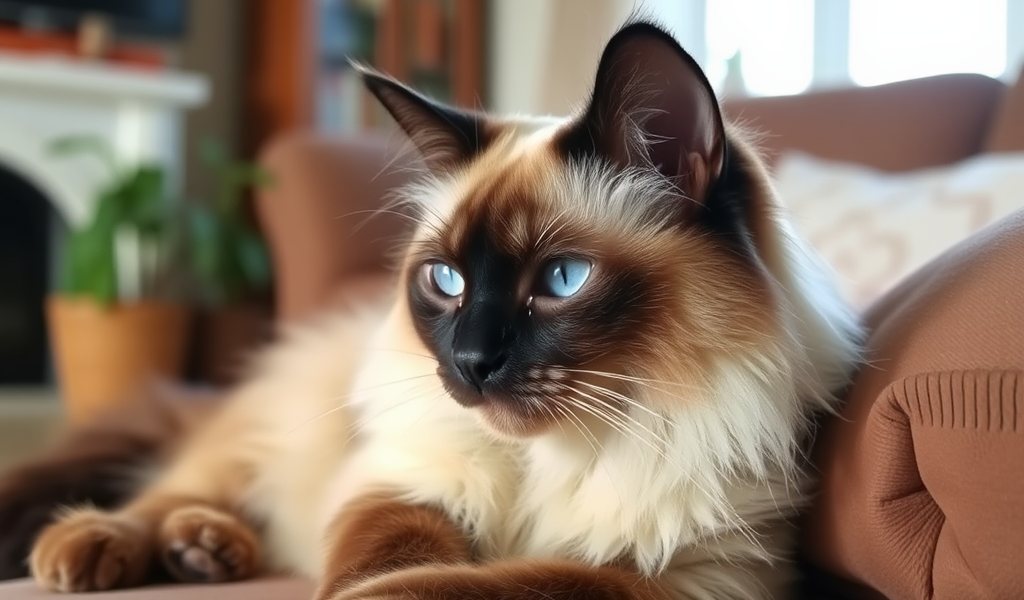Cats are enigmatic creatures, often leaving us to ponder the meaning behind their subtle movements and expressions. As loving companions, they communicate in ways that can sometimes feel mysterious to their human counterparts. Understanding your feline friend’s body language is essential not only for strengthening your bond but also for ensuring their well-being. From the gentle flick of a tail to the slow blink of an eye, each gesture is a window into their thoughts and emotions. In this insightful guide, we’ll explore the captivating world of cat body language, decoding the signals that reveal what your cat is really trying to say. Whether they’re feeling playful, anxious, or affectionate, learning to interpret these cues will help you create a more harmonious environment for both you and your beloved pet. Join us as we unlock the secrets of feline communication and deepen the connection with your furry companion!

1. Understanding the Basics of Cat Body Language
Understanding the basics of cat body language is essential for any cat owner who wants to build a deeper bond with their furry companion. Cats, unlike dogs, communicate primarily through subtle body movements and postures, which can sometimes be misinterpreted. By paying close attention to these signals, you can gain valuable insights into your cat’s feelings and intentions.
One of the fundamental aspects of cat body language is the position of their tail. A high, upright tail often indicates happiness and confidence, while a low or tucked tail can signify fear or submission. When a cat’s tail is puffed up, it’s usually a sign of agitation or excitement—think of it as their version of a puffed-up chest.
Another key factor to consider is the cat’s ears. Forward-facing ears suggest curiosity and interest, while ears that are flattened against the head may indicate irritation or fear. Additionally, the position of their whiskers can provide further context; whiskers that are drawn back can be a sign of discomfort, while whiskers that are forward signal engagement and alertness.
Purring is commonly associated with contentment, but it can also indicate distress in certain situations, particularly if your cat is in pain. Observing the context in which your cat purrs can help clarify its meaning.
Finally, don’t forget about eye contact. Slow blinking is a sign of trust and affection, while dilated pupils can indicate excitement or fear. By learning to recognize these subtle signals, you can better understand your cat’s moods and emotions, fostering a stronger and more harmonious relationship.
2. Common Tail Positions and Their Meanings
Understanding your cat’s tail language is crucial for deciphering their emotions and intentions. The tail is one of the most expressive parts of a cat’s body, and different positions can reveal a wealth of information about how your feline friend is feeling.
1. Straight Up: When your cat holds their tail upright, it’s a sign of confidence and happiness. This position often indicates that your cat is feeling friendly and is open to interaction. You might see this when they greet you at the door or when they’re exploring new environments.
2. Curved Tip: If your cat’s tail has a gentle curve at the tip, it signifies a playful mood or curiosity. This position often means your cat is excited about something, whether it’s a new toy or an interesting sound.
3. Low and Tucked: A tail that is held low or tucked between the legs indicates fear or submission. If your cat feels threatened or anxious, they may adopt this posture as a protective instinct. It’s essential to give them space and reassurance during such moments.
4. Puffed Up: When your cat’s tail puffs up like a bottlebrush, it’s likely a sign of agitation or fear. This position is often seen when a cat feels threatened or is trying to appear larger to scare off a perceived threat. Recognizing this signal can help you reduce stressors in your cat’s environment.
5. Swishing or Lashing: A tail that is swishing back and forth, especially with a stiff posture, usually indicates irritation or frustration. If you notice this behavior, it’s often best to give your cat some space, as they may be feeling overwhelmed.
6. Slowly Moving Side to Side: If your cat’s tail is moving slowly from side to side, they are likely feeling relaxed yet focused, possibly while they’re stalking a toy or observing their surroundings. This posture suggests that they are engaged and content, providing a perfect opportunity for play.
By paying close attention to your cat’s tail position and movements, you can gain valuable insights into their emotional state. Understanding these subtle cues not only strengthens your bond but also ensures that your feline companion feels safe and understood in their environment.
3. The Significance of Ear and Whisker Movements
Understanding your cat’s body language is crucial for building a strong bond with your feline friend, and two key indicators to observe are ear and whisker movements. Cats are incredibly expressive creatures, often communicating their feelings and intentions through subtle changes in their ear and whisker positions.
When it comes to ear movements, pay close attention to their orientation. Ears that are perked up and facing forward typically signal that your cat is alert and curious about their surroundings. This is a sign of confidence and interest, suggesting that they are engaged and ready to explore. Conversely, if you notice your cat’s ears flicking back or flattening against their head, it’s a warning sign that they may be feeling threatened, anxious, or annoyed. If this behavior is accompanied by hissing or growling, it’s best to give them some space to avoid escalating the situation.
Whiskers also play a pivotal role in feline communication. These long, sensitive hairs are not just for show; they provide cats with vital sensory information about their environment. When your cat’s whiskers are relaxed and hanging down, it usually indicates a calm and comfortable state. However, if you see their whiskers pushed forward, this can mean that they are curious or excited, perhaps intrigued by a toy or a potential prey. On the other hand, whiskers that are pulled back against the face can indicate fear or discomfort.
By closely observing these movements, you can gain invaluable insight into your cat’s emotional state. Recognizing the nuances of their ear and whisker positions will not only enhance your understanding of their behavior but also strengthen the bond between you and your furry companion. A little attention to these subtle signals can go a long way in ensuring your cat feels safe, understood, and loved in their home environment.

4. Decoding Facial Expressions and Eye Contact
Understanding a cat’s body language begins with decoding their facial expressions and eye contact, which are vital indicators of their mood and intentions. Cats are inherently expressive creatures, and their faces can tell you a lot about how they’re feeling in any given moment.
When a cat’s eyes are wide open and their pupils are dilated, this can indicate excitement, curiosity, or even fear. In contrast, if their pupils are constricted and their eyes are squinting, it usually signifies contentment or relaxation—often seen when a cat is comfortably lounging in their favorite spot. A slow blink from your feline friend is another positive sign, often referred to as a “cat kiss.” If you catch your cat giving you this slow blink, reciprocating it can strengthen your bond and show them that they are safe and loved.
Their mouth also plays a role in their emotional expression. A cat that has its mouth slightly open or is displaying its teeth might be feeling threatened or defensive. Conversely, a relaxed mouth with no signs of aggression suggests that your cat is comfortable and at ease in their environment.
Eye contact is equally revealing. Cats will often avoid direct eye contact as a sign of submission or trust, while a prolonged stare can be perceived as a challenge or a sign of aggression. If your cat gazes at you with relaxed eyes, they’re likely expressing affection; however, if they are staring intensely, it’s best to be cautious, as they may be feeling territorial or threatened.
By paying close attention to these subtle facial cues and eye interactions, you can unlock a deeper understanding of your feline companion’s emotions and needs. This knowledge not only enhances your relationship but also helps you provide a more supportive and nurturing environment for your cat.
5. Playful vs. Defensive Behaviors
Understanding your cat’s body language can be a delightful yet complex journey, especially when it comes to distinguishing between playful and defensive behaviors. Cats are inherently expressive creatures, and their movements, postures, and even the flick of a tail can convey a wealth of information about their feelings and intentions.
Playful Behaviors: When your feline friend is in a playful mood, you’ll likely notice a range of engaging signals. Their body will be relaxed, ears perked up, and eyes bright with excitement. A common playful stance is the “play bow,” where they lower their front legs while keeping their back legs elevated, almost as if they’re ready to pounce. You might also observe them engaging in exaggerated movements, like rapid, swatting motions with their paws or hopping around in a mock chase. Their tail may be upright or slightly curved, indicating happiness and contentment as they explore their environment or interact with toys. During playtime, you might hear them let out soft chirps or trills, adding to the ambiance of joy.
Defensive Behaviors: In contrast, when cats feel threatened or defensive, their body language shifts dramatically. A cat displaying defensive behavior may crouch low to the ground, puffing up their fur to appear larger and more intimidating. Their ears will be flattened against their head, and their eyes may be wide with dilated pupils, signaling fear or aggression. When backed into a corner, a defensive cat might swat with their paws or hiss as a warning. Additionally, a curled tail or one held low indicates a state of anxiety or distress. Recognizing these cues is crucial in preventing escalation, as a defensive cat may feel cornered and act out if they believe they have no escape.
By learning to interpret these playful versus defensive behaviors, you can create a safer and more enriching environment for your cat. Providing appropriate toys and playtime can channel their playful energy, while respecting their boundaries during defensive moments can forge a stronger bond built on trust and understanding.

6. Building a Stronger Bond Through Body Language Awareness
Understanding your cat’s body language is not just about deciphering their moods; it’s a pathway to building a deeper, more meaningful bond with your feline friend. Cats communicate primarily through non-verbal cues, and being attuned to these signals can significantly enhance your relationship. For instance, when your cat approaches you with a slow blink, it’s often referred to as a “cat kiss”—a sign of trust and affection. By reciprocating this gesture, you can communicate your love back, reinforcing that bond.
Additionally, paying attention to their posture can reveal their comfort levels. A cat that is relaxed, with its tail held high and ears facing forward, is a happy cat, while a puffed-up tail and arched back indicate fear or aggression. Recognizing these signs allows you to respond appropriately, whether that means giving your cat space during stressful situations or engaging in play when they’re feeling playful.
Creating a safe environment where your cat feels secure will encourage them to express themselves more freely. When your cat feels understood, they are more likely to seek your company, resulting in a more rewarding relationship. By taking the time to observe and react to your cat’s body language, you not only decode their emotions but also cultivate a stronger connection built on trust, respect, and love. In essence, becoming fluent in “cat” is a delightful journey that ultimately brings you closer to your furry companion.
Purring isn’t always a sign of happiness—find out why in our guide on understanding cat purring.
In conclusion, understanding your cat’s body language is a fascinating journey that not only enhances the bond between you and your furry friend but also enriches their overall well-being. By mastering the subtle nuances of their movements and expressions, you can create an environment where they feel safe, loved, and understood. Remember, every flick of the tail and subtle shift in posture carries meaning—your cat’s unique way of communicating their needs and emotions. As you embark on this enlightening path, we encourage you to observe your cat closely, interpret their signals, and respond with love and care. After all, in the world of feline communication, every moment is an opportunity to connect more deeply with your cherished companion. Thank you for joining us on this adventure—be sure to keep your eyes open for those little cues, and watch your relationship blossom like never before!


